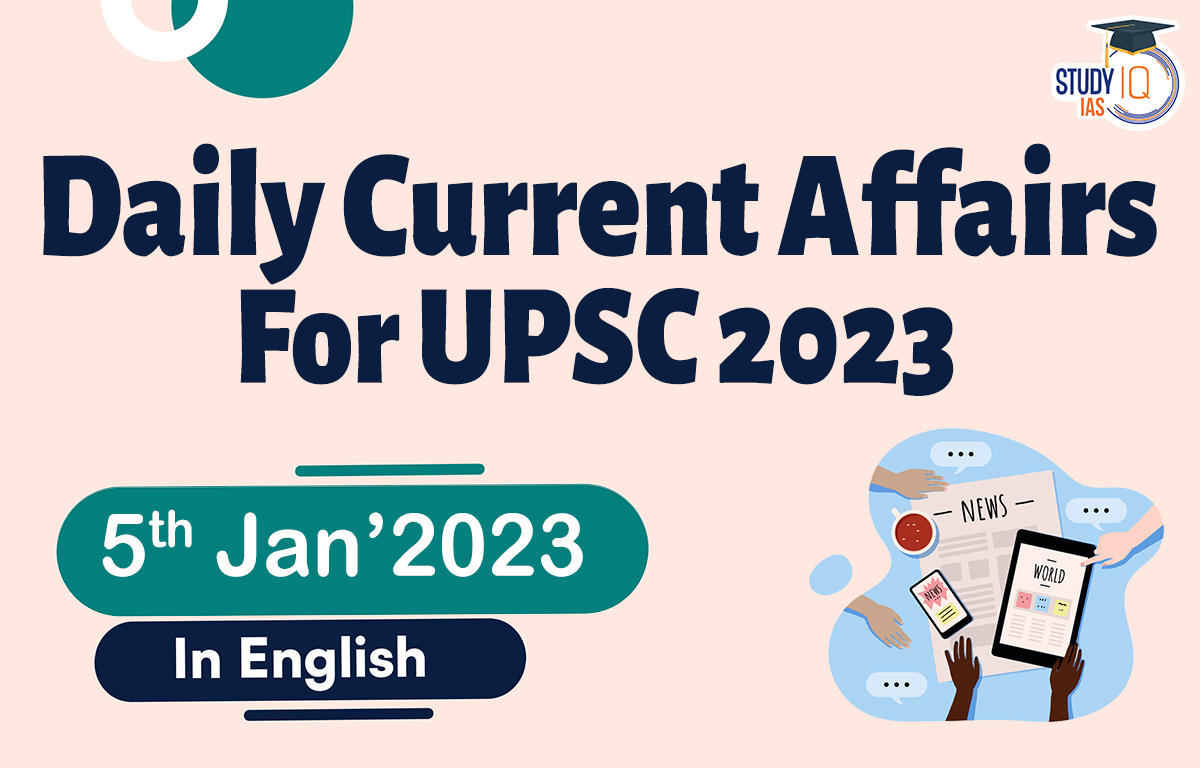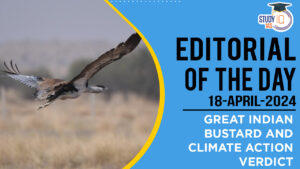Daily Current Affairs for UPSC 2023
Q) Which one of the following statement is not correct about ‘Whip in the Indian Parliamentary system’?
- Every political party has its own whip in Parliament.
- He is in charge of overseeing party members’ conduct.
- The office of whip is mentioned in Rules of the House.
- Speaker decides the disqualification of member disobeying whip.
Daily Current Affairs for UPSC – 4 January 2023
Explanation:
- Option (1) is correct: A Whip is an official party member who is generally the party’s ‘enforcer’ inside the legislative assembly or parliament. Every political party, whether ruling or Opposition, has its own whip in the Parliament who is appointed by the political party to serve as an assistant floor leader.
- Option (2) is correct: Whip is responsible for regulating and monitoring the party members’ behaviour in the Parliament. Charging Disciplinary action against the members, who fail to follow the directives given by the whip. He plays a crucial role in ensuring the smooth and efficient conduct of business on the floor of the House. Whip identifies of signs of discontent among party members and informing the respective leaders of their party.
- Option (3) is incorrect: The office of ‘whip’, is mentioned neither in the Constitution of India nor in the Rules of the House nor in a Parliamentary Statute. It is based on the conventions of the parliamentary government. India inherited the concept of the whip from the British parliamentary system. Parties appoint a senior member from among their House contingents to issue whips-this member is called a Chief Whip, and he/she is assisted by additional Whips.
- Option (4) is correct: A legislator may face disqualification proceedings if she/he disobeys the whip of the party unless the number of lawmakers defying the whip is 2/3rds of the party’s strength in the house. This Disqualification is decided by the speaker of the house. Whip is charged with the responsibility of ensuring the attendance of his party members in large numbers and securing their support in favour of or against a particular issue.
Q) Consider the following statements about ‘National Green Hydrogen Mission’:
- The mission wants to increase green hydrogen production capacity to at least 5 million metric tonnes annually by 2030.
- Financial incentives will be offered for domestic electrolyser manufacturing under the SIGHT programme of the mission.
- India’s first pure green hydrogen plant was commissioned in the state of Uttar Pradesh.
Which of the statements given above are correct?
- 1 and 2 only
- 2 and 3 only
- 1 and 3 only
- 1, 2 and 3
Explanation:
- Statement 1 is correct: The Union Cabinet approved National Green Hydrogen Mission. Green hydrogen is defined as hydrogen produced by splitting water into hydrogen and oxygen using renewable electricity. The mission aims toward development of green hydrogen production capacity of at least 5 MMT (Million Metric Tonne) per annum; renewable energy capacity addition of about 125 GW in the country and abatement of nearly 50 MMT of annual greenhouse gas emissions.
- Statement 2 is correct: Under the SIGHT Programme of the National Green Hydrogen Mission, two distinct financial incentive mechanisms for targeting domestic manufacturing of electrolysers and for production of Green Hydrogen will be provided. Regions capable of supporting large scale production and/or utilization of Hydrogen will be identified and developed as Green Hydrogen Hubs. The Mission will also support pilot projects in emerging end-use sectors and production pathways. Strategic Hydrogen Innovation Partnership (SHIP) a public-private partnership framework for R&D will be facilitated under the Mission.
- Statement 3 is incorrect: Oil India Limited (OIL) commissioned India’s first 99.99% pure green hydrogen plant in eastern Assam’s Jorhat. The National Green Hydrogen Mission target at creation of export opportunities for Green Hydrogen and its derivatives; de-carbonization of industrial, mobility and energy sectors; reduction in dependence on imported fossil fuels and feedstock; development of indigenous manufacturing capabilities; creation of employment opportunities; and development of cutting-edge technologies.
Q) With reference to heat dome, consider the following statements:
- It happens when a high pressure area holds warm air over a region for a long time period.
- It forms during El Nino years when the eastern Pacific’s waters are warm.
Which of the statements given above is/are correct?
- 1 only
- 2 only
- Both 1 and 2
- Neither 1 nor 2
Explanation:
- Statement 1 is correct: A heat dome occurs when an area of high-pressure traps warm air over a region, just like a lid on a pot, for an extended period of time. The high-pressure forces air to sink and once it reaches the ground, it gets compressed and becomes even warmer and drier, further raising the temperature of the area. Heat domes generally stay for a few days but sometimes they can extend up to weeks, which might cause deadly heat waves. There were several parts of Europe where temperatures surged to summer or springtime levels, with temperatures rising by 10 to 20 degrees Celsius above normal. Climatologists said that the continent is experiencing an extreme warm spell because of the formation of a heat dome over the region.
- Statement 2 is incorrect: They are more likely to form during La Niña years, when waters are cool in the eastern Pacific and warm in the western Pacific, creating vast areas of sweltering. The phenomenon begins when there is a strong change (or gradient) in ocean temperatures. In the process known as convection, the gradient causes more warm air, heated by the ocean surface, to rise over the ocean surface.
Q) Consider the following statements:
- She is recognized as India’s first woman teacher.
- She started the Home for the Prevention of Infanticide for pregnant widows.
- She composed a book of poems named Bavan Kashi Subodh Ratnakar.
- She led a campaign against child marriage and supported widow remarriage.
Which one of the following personalities is best described in the statements given above?
- Nirmala Deshpande
- Tarabai Shinde
- Ramabai Ranade
- Savitribai Phule
Explanation:
- Option (4) is correct: Savitribai Phule was a pioneer who challenged oppressive social norms in her quest for women’s education, equality and justice and is formally recognised as India’s first woman teacher. Savitribai initiated Mahila Seva Mandal to create awareness of women’s rights in 1852. Equality prevailed and members of all castes were made to sit on the same mattress. She had a fire for the importance of education which she penned down in her books. Her books of poems were Kavya Phule and Bavan Kashi Subodh Ratnakar, which were published in 1854 and 1892 respectively. In her poem, she urged the oppressed classes to get educated and break the chain of oppression. Along with her husband she started the Balhatya Pratibandhak Griha (‘Home for the Prevention of Infanticide’) for pregnant widows facing discrimination. She also advocated for inter-caste marriages, widow remarriage, eradication of child marriage, eradication of sati and dowry systems. Later, in 1873, the Phules set up the Satyashodhak Samaj (‘Truth-seekers’ society’), a platform open to all, irrespective of their caste, religion or class hierarchies, with the sole aim of bringing social equity. She defied all odds, as she carried the titve (earthen pot), at her husband’s funeral procession in 1890. Savitribai also became involved in relief work during the 1896 famine in Maharashtra and the 1897 Bubonic plague, in which she herself contracted the disease and breathed her last in
Q) With reference to ‘virovore’, consider the following statements:
- It is an organism that eats viruses.
- Paramecium species can eat infectious chloroviruses.
Which of the statements given above is/are correct?
- 1 only
- 2 only
- Both 1 and 2
- Neither 1 nor 2
Explanation:
- Statement 1 is correct: A virovore is an organism that eats viruses have been discovered. A virus is an infectious microbe consisting of a segment of nucleic acid (either DNA or RNA), which can only replicate inside a living cell. The new research may change the understanding of the role viruses play in the food chain at a microscopic level and it also completely changes our view on global carbon cycling.
- Statement 2 is correct: The discovered species of Halteria and Paramecium can eat huge numbers of infectious chloroviruses. Halteria are microscopic ciliates that populate freshwater throughout the world. The research shows that a virus-only diet, termed “virovory” is enough to fuel the physiological growth and even the population growth of an organism. It is estimated that ciliates in a small pond might eat 10 trillion viruses a day.


 UPSC Cadre Allocation Policy, for IAS, I...
UPSC Cadre Allocation Policy, for IAS, I...
 Lok Sabha Election 2024, Starts Form 19 ...
Lok Sabha Election 2024, Starts Form 19 ...
 Editorial of the day (18th Apr): Great I...
Editorial of the day (18th Apr): Great I...

















